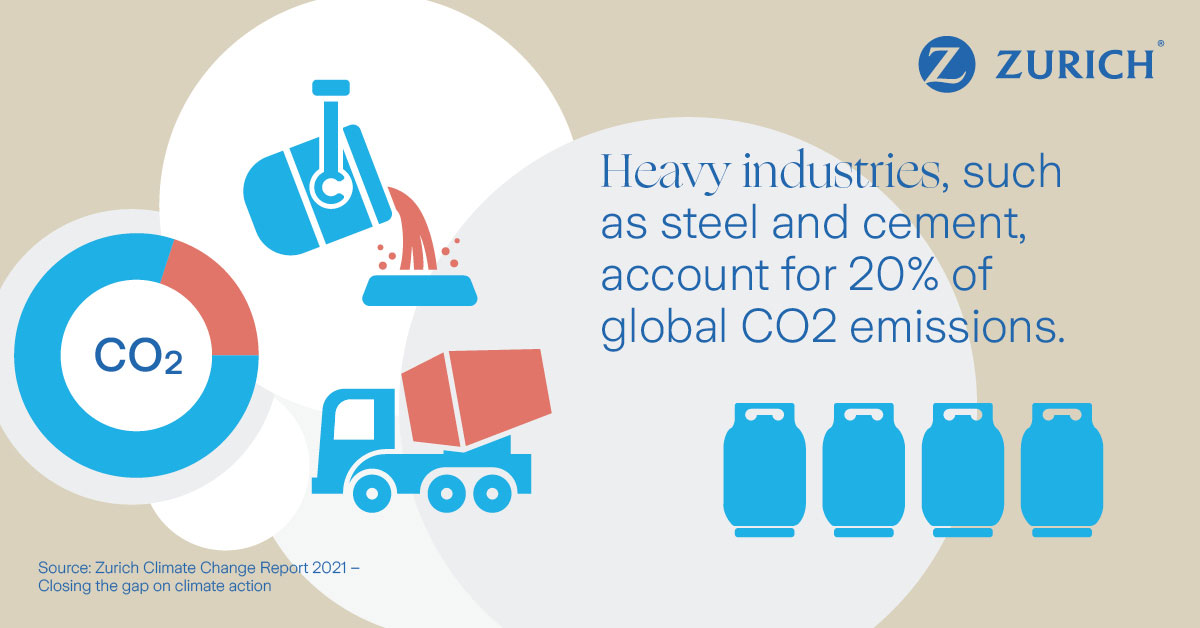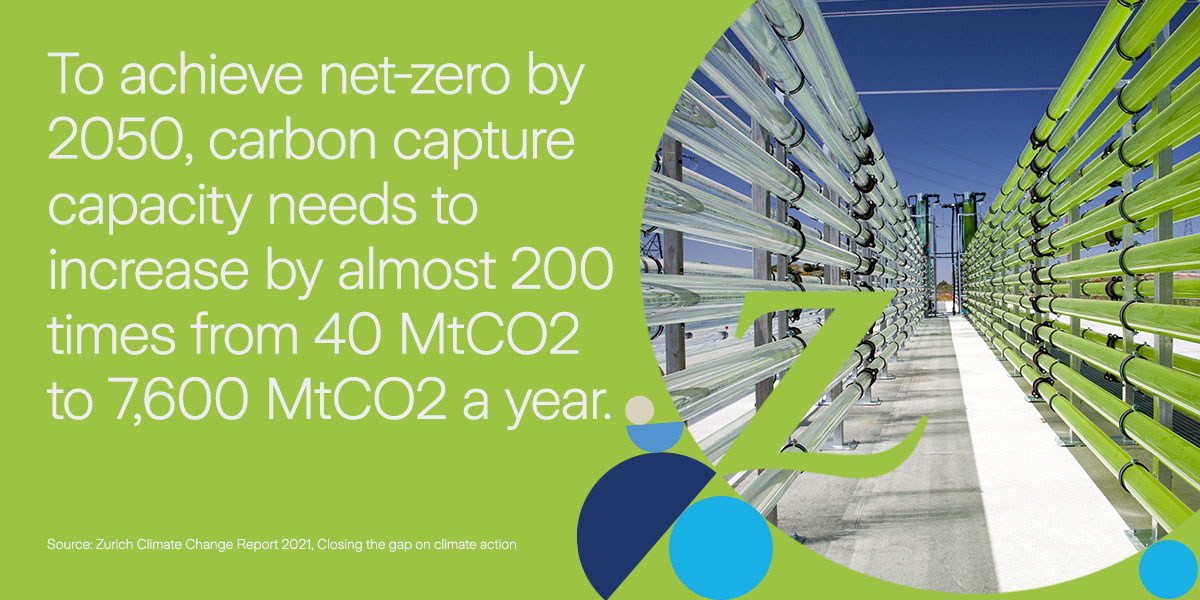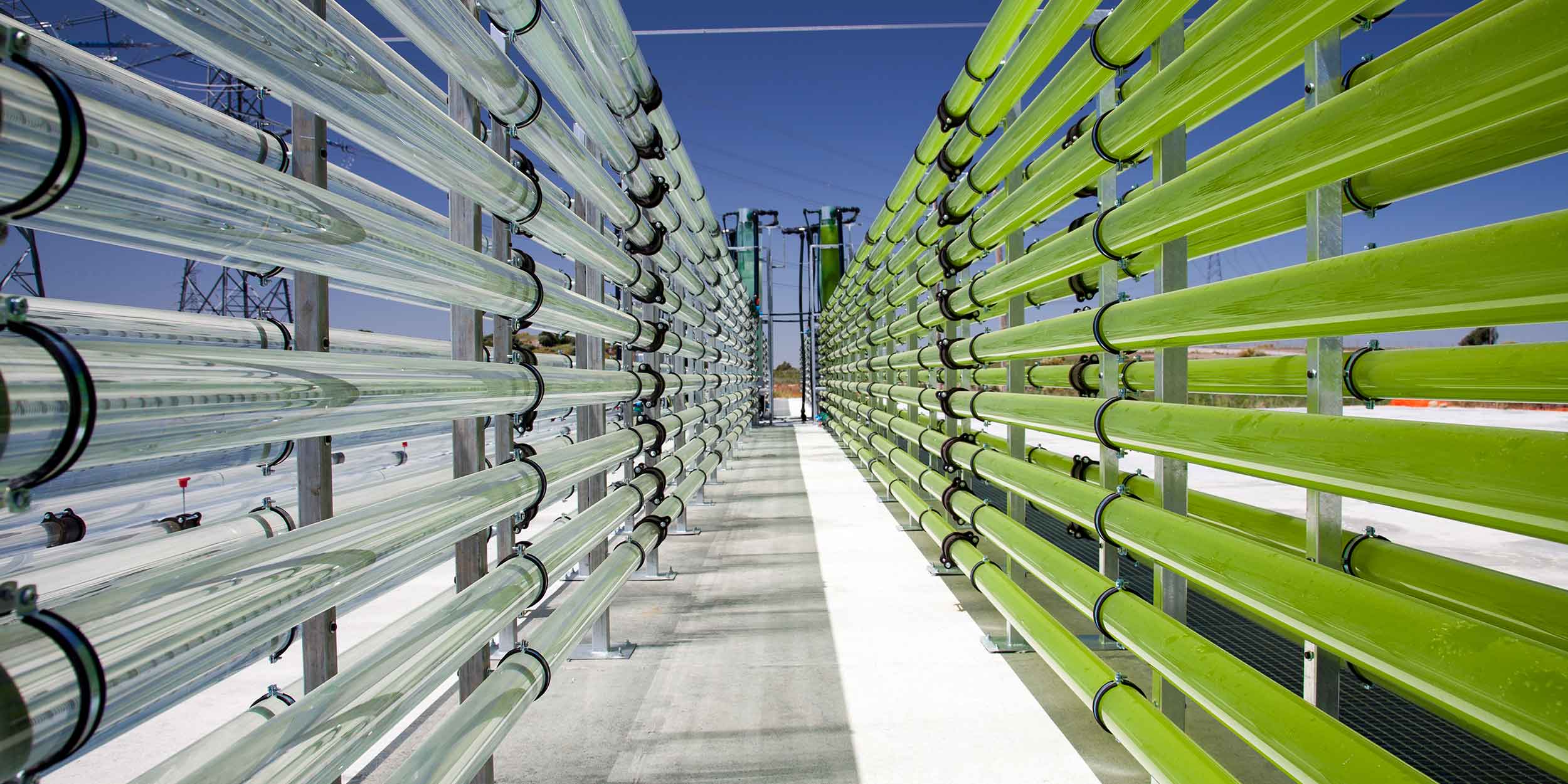How carbon capture can help heavy industries on the road to net-zero
Climate resilienceArticleSeptember 7, 20217 min read
For some heavy industries, reducing or eliminating CO2 emissions is not yet possible. Thankfully, the latest carbon capture technologies are enabling CO2 to be stored underground, while simultaneously boosting production of an exciting green energy source – ‘blue’ hydrogen.
If the world is to achieve the headline targets of the 2015 Paris Agreement – by reaching net-zero emissions as soon as possible and limiting global temperature rise this century to 1.5°C – then one thing is clear: all major industries must significantly reduce the amount of harmful CO2 they are releasing into the atmosphere. In some sectors, such as transport for instance, the ways to do this are obvious: companies can either drastically reduce their CO2 emissions or, better still, eliminate CO2 emissions altogether by switching to sustainable sources of energy.
In some heavy industries, however, this low- or zero-carbon approach is not yet possible. In the iron and steel industry, for example, the enormously hot temperatures required in a blast furnace cannot be achieved with renewable energy alone. While in the construction industry, cement cannot be made without creating CO2 as its production relies on a chemical reaction to turn limestone into lime (this produces CO2 as a byproduct that cannot be eliminated by changing fuel or reducing energy usage).
As John Scott, Head of Sustainability Risk at Zurich Insurance Group, explains:
“The big industries – and especially those that underpin construction and infrastructure by making materials such as steel, cement, and glass – use processes that are typically very energy intensive. And the chemistry of making steel and cement, in particular, is very difficult to change. There is just no other option at present. This is why these industries are now being referred to as ‘hard-to-decarbonize’.”
Carbon capture, use and storage
These ‘hard-to-decarbonize’ industries present a significant bump in the road on our way to achieving net-zero, not least because they currently account for over 30 percent of global energy demand. Indeed, the steel and cement sectors alone each generate around 7 percent of total energy system CO2 emissions. To meet this challenge, a new group of emissions reduction technologies known as CCUS, or Carbon Capture, Use and Storage, is playing an increasingly important role.
For industries where it is impossible to eliminate or reduce CO2 emissions beyond a certain point, CCUS provides a way to capture and compress the harmful CO2 and then transport it by pipeline, ship, rail or truck so that it can either be used in secondary applications or be permanently stored underground, by injecting it deep into sealed geological formations such as depleted oil and gas reservoirs. This is known as abating CO2 emissions.

‘Blue’ hydrogen and its benefits
CCUS technologies also have a major role to play in the production of hydrogen. Hydrogen has many industrial uses including as an environmentally friendly, zero-carbon fuel that can be used in both fuel cells and internal combustion engines. Conventionally, hydrogen is produced by splitting natural gas into hydrogen and CO2 through a process called steam methane reforming. This process is unfortunately carbon-intensive and so the hydrogen it produces is often referred to as ‘gray’ hydrogen.
However, if CCUS technologies are used to capture the CO2, the hydrogen produced is more friendly to the environment and so is referred to as ‘blue’ hydrogen. This process has two major benefits. First, the resulting CO2 is safely stored underground instead of being released into the atmosphere. Second, the ‘blue’ hydrogen produced can be used to fuel and thereby decarbonize other industries, such as power generation and transport. 'Green’ hydrogen, as its name suggests, is the cleanest option of all because it splits water into hydrogen and oxygen using electrolysis powered by renewable energy sources, so that no CO2 is created during the process.
One benefit of both blue and green hydrogen as fuels is that they are widely transportable. This gives them a significant advantage over renewable energy sources, as Scott explains: “The fundamental problem with renewables is that you have to generate the power locally to where you need the electricity. Because you cannot transport electricity long distances without leaking energy. One solution is to take the renewable power produced in remote locations – such as an off-shore wind farm – and then convert it nearby into a more easily transportable fuel such as green or blue hydrogen.”

The growth of CCUS
Historically, industrial carbon capture has been labelled as an expensive, unproven process because of the capital costs of building a transport and storage network and the operational costs to capture, pump, and compress the CO2. Early CCUS developments were often envisaged as a way to decarbonize individual thermal coal power plants, an expensive process, especially as costs of renewable power dramatically reduced. What is now clear is that CCUS transport and storage infrastructure, built at scale, significantly reduces the costs of decarbonizing heavy industries and supports the decarbonization of many other sectors through the hydrogen economy.

Industrial-scale carbon capture is certainly a well-established process. The first large-scale CCUS project started operating in 1996, at Sleipner in Norway. And there were 26 large-scale facilities in operation around the world as of 2020, with 37 more in development. Last year, the combined CO2 capture capacity from power and industrial facilities totaled 40 million metric tons of CO2 (MtCO2).
However, more must be done. To achieve net-zero emissions by 2050, the International Energy Agency (IEA) estimates that carbon capture capacity needs to grow exponentially to 1,670 MtCO2 by 2030 and 7,600 MtCO2 by 2050. Achieving these volumes will require a similarly rapid increase in the construction of large-scale CCUS facilities. According to the IEA, a tenfold increase in capacity is required by 2025, while the Global CCS Institute estimates 2,000 CCUS facilities would need to be in operation globally by 2040.
This sounds a daunting challenge in itself, but scaling up the construction and development of CCUS facilities could revolutionize the role of industrial carbon capture by making it significantly more cost-effective.
“I think that the future of CCUS is to set up carbon capture and storage systems that service several different industrial processes at the same time,”
“This would mean a single pipeline network and carbon store or stores receiving CO2 from a cement plant, a chemicals plant, a steel plant, and a blue hydrogen plant all at the same time. That changes the economics completely. Then, rather than just expensively removing CO2 as a harmful byproduct, we are also encouraging the production of a valuable new source of green energy – blue hydrogen – that can then be used to decarbonize other sectors.”
Four nature-based solutions for carbon capture
CCUS is a human-made process designed for industry. But CO2 is also absorbed from the atmosphere through a number of natural processes, including in plants, soils, sediments, and the ocean. The following four nature-based solutions are also helping the world achieve net-zero:
- Forestry – including preserving existing forests, reforesting ones that have been cut down, and afforesting, which is planting new trees where none have grown before.
- Wetlands – including conserving and restoring carbon-rich peatlands and coastal wetlands such as mangroves.
- Agriculture – including helping soils to store and retain carbon through no-till agriculture and crop rotation, improved management of livestock, and agroforestry, which combines growing trees and shrubs with other forms of agriculture.
- Oceans – including restoring seagrass meadows and growing kelp and shellfish to restore or grow marine ecosystems.
Further information




